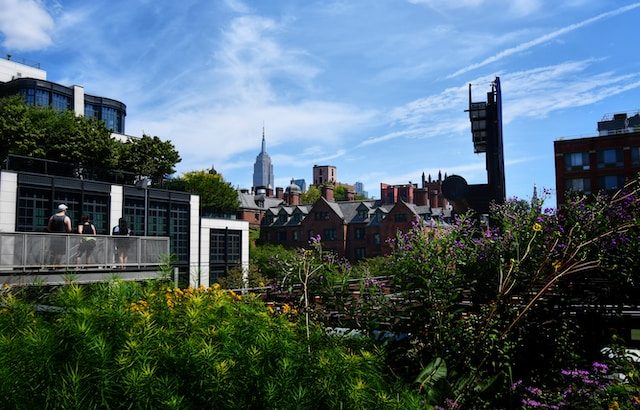Ah, New York City! The land of skyscrapers, Broadway, and… rooftop gardens? Absolutely! As urbanites seek to reclaim a bit of greenery amidst the concrete jungle, rooftop gardens have become increasingly popular. They offer not only a serene escape but also a slice of sustainable living in the heart of the city.
However, an NYC rooftop garden does come with its unique set of challenges. From strong winds to weight restrictions, it’s not exactly the same as tending a backyard plot. But with the right knowledge, you can transform your rooftop space into a lush paradise. Here’s how:
1. Begin with the Basics: Building Codes & Permissions
- Before embarking on your gardening journey, ensure you’ve obtained all necessary permissions from your building management. Familiarize yourself with NYC building codes and weight restrictions to ensure safety and compliance.
2. Choose Wind-Resistant Containers:
- NYC rooftops can be quite windy. Opt for sturdy, heavy containers or those designed to resist tipping. Consider materials like wood, terracotta, or stone.
3. Select Suitable Plants:
- Go Native: Native plants are adapted to local conditions and will often thrive with minimal care.
- Wind and Sun Tolerance: Rooftops experience stronger sun and wind exposure. Plants like ornamental grasses, lavender, and sunflowers are both hardy and attractive.
- Annuals vs. Perennials: While perennials come back each year, annuals can add seasonal color and variety.
4. Efficient Watering System:
- Drip Irrigation: It’s efficient, conserves water, and ensures that plants receive a steady water supply.
- Self-Watering Containers: They have reservoirs that provide consistent moisture, especially beneficial during hot summer months.
- Mulch: A layer of mulch can help retain moisture, suppress weeds, and regulate soil temperature.
5. Soil and Fertilization:
- Lightweight potting mixes are best for rooftop gardens. They ensure good drainage and are less weighty.
- Fertilize moderately. Rooftop plants may require more nutrients than their ground-level counterparts due to limited soil volume.
6. Create a Microclimate with Strategic Layout:
- Windbreaks: Use trellises, lattice screens, or taller plants to break the wind, protecting more delicate plants.
- Shade Structures: Consider umbrellas, pergolas, or shade cloth to provide relief from the intense midday sun.
7. Regular Maintenance:
- Inspect Regularly: Check for pests, wilting, or any signs of diseases.
- Pruning: Regularly prune your plants to encourage growth and maintain a neat appearance.
- Rotate Plants: Occasionally rotating your plants ensures even sun exposure, especially if certain areas of your garden receive more sunlight.
8. Think Beyond Plants:
- Furniture: Add lightweight furniture to create a relaxation or entertainment spot.
- Lighting: Solar-powered garden lights can add ambiance without the need for electrical wiring.
- Art: Weather-resistant art pieces or sculptures can accentuate your garden’s beauty.
9. Safety First:
- Ensure that all installations, from planters to furniture, are secure.
- If children or pets access the space, make sure it’s safe and plants chosen are non-toxic.
Rooftop gardens offer NYC residents a personal oasis and a unique perspective of the city. With care and creativity, your rooftop garden can be a vibrant testament to nature’s resilience and beauty, even in an urban setting. Whether you’re growing flowers, fresh herbs, or simply seeking solace, the sky is truly the limit!
